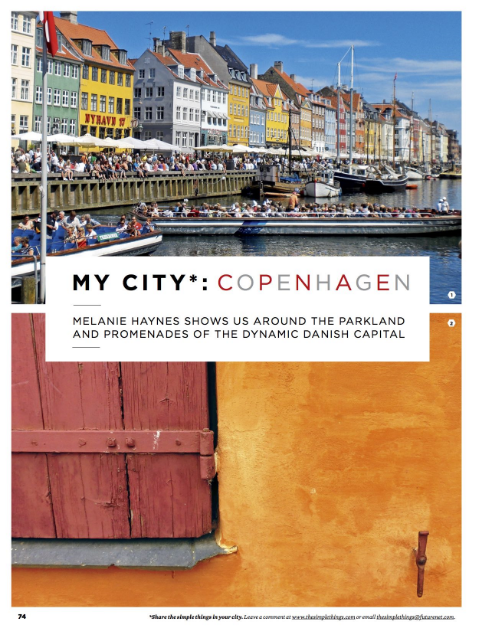Rose Petal Syrup (for the Chelsea Fringe Collins cocktail)
Makes approximately 750ml
6 handfuls pink and/or red rose petals
1.2kg caster sugar
750ml water
Zest of half an unwaxed, organic orange
1 tbsp lemon juice
Pinch of salt
Equipment
Sealable presentation bottles, sterilized
1 Snip off the bitter white tip at the base of each petal. Or, when picking the petals from the rosebush, pull them in a clump with one hand and snip the base off in one go with the other.
2 Loosely pack the petals in a nonreactive bowl and add about 400g of the sugar. Gently massage it into the petals to bruise them and start the maceration. Cover with a clean dishtowel and leave overnight or for up to 12 hours.
3 You should return to a gooey mess; the petals have shrunk and the sugar has extracted some colour and flavour from them. Tip the mixture into a non-stick pan and add the remaining sugar, water, orange zest, lemon juice and a pinch of salt, and gently bring to a boil. The colour should transfer from the petals into the liquid. Simmer for 5 mins or until you have a thick, unctuous syrup.
4 Let the syrup cool. Strain it into a wide-mouthed pitcher, then funnel into the sterilized presentation bottles and seal. You can store it in the fridge for well over a month. As this is a rich simple syrup, you need only very small quantities in your sodas and cocktails.
Honeysuckle Syrup (for the Honeysuckle cocktail)
Makes approximately 500ml
8 large handfuls of unsprayed honeysuckle flowers, leaves and stems removed
400g caster sugar*
Juice of half a lemon
Equipment
Sealable presentation bottles, sterilized
1 Place the honeysuckle flowers in a non-stick bowl and cover with cold water, then leave to steep for 12 hours, or at least overnight, at room temperature. Make sure the flowers are completely covered by the water.
2 Strain the mixture into a measuring cup, discarding the flowers. Pour the liquid into a non-stick pan.
3 Measure an equal amount of sugar to the liquid and add to the pan.
4 Bring to a boil, and simmer for 5 mins.
5 Remove from the heat and allow to cool.
6 Add the lemon juice and funnel into the sterilized presentation bottles.
*Feel free to replace half the sugar with a handful of chopped sweet cicely leaves, but bear in mind that this will adjust the colour
Rowan, Honey and Lemon Foam (for the Honeysuckle Cocktail)
Makes enough foam for 15 drinks
1½ sheets gelatin (platinum grade)
60ml runny honey
60ml Rowan Syrup*
60ml lemon juice
180ml hot water
120ml pasteurized egg whites
Wild honeysuckle blossom
Equipment
Professional cream whipper with 2 N2O cartridges
1 Place the gelatin sheets in a bowl of iced water and soak them until they are pliable (about 10 mins).
2 Meanwhile, combine the honey, rowan syrup, lemon juice and hot water in a non-stick pan over a very low heat, until the honey is dissolved. Strain using a fine-mesh sieve into a clean pan.
3 Squeeze the excess water from the softened gelatin sheets. Drop the sheets into the pan containing the mix and heat gently to dissolve the gelatin. Stir constantly and do not allow to reach boiling point.
4 Turn off the heat as soon as the gelatin is dissolved. Let cool to room temperature (should take about 15 mins).
5 Place the egg whites in a bowl and lightly whisk until slightly frothy and pour into the pan.
6 Funnel this liquid into the whipper. Charge it with the 2 N2O cartridges, following the manufacturer’s instructions. Shake well for at least a minute and refrigerate.
7 Let the foam stabilize for a minimum of 2 hours, preferably overnight, before using.
8 Shake the whipper well before dispensing. Tip it upside down so that it is completely inverted over the cocktail. Let the foam settle for 20 seconds before garnishing with wild honeysuckle blossom.
*Rowan Syrup (for the Rowan, Honey and Lemon Foam, to go in the Honeysuckle cocktail)
Makes approximately 1 litre
1kg very ripe, bright red rowan berries
Approximately 2 litres water
1 heaped tsp salt
700g caster sugar
Equipment
Sealable presentation bottles, sterilized
Large jelly bag or muslin
1 Separate the rowan berries from their stalks, then wash and rinse the berries. Add to a non-stick pan and pour in about 1 litre of water and the salt, making sure the berries are covered.
2 Bring to a boil and simmer long enough for them to become soft (about 25 mins). Remove from the heat.
3 Using the jelly bag/muslin, slowly strain the berries and liquid into a wide-mouthed pitcher.
4 Return the pulp to the pan and add the remaining 1 litre of water. Bring to a boil, then remove from the heat.
5 Strain the pulp, as above, into the pitcher.
6 Return all the strained liquid to the cleaned pan, add the sugar, bring to a boil, and boil hard for 5 mins. Remove from the heat.
7 Funnel the syrup into the presentation bottles while still piping hot. Seal. 8 Store in a cool, dark place. Once opened, keep in the fridge and use within a month.
Cocktail recipes from Wild Cocktails from the Midnight Apothecary by Lottie Muir (CICO Books, £16.99). Over 100 recipes using home-grown and foraged fruits, herbs and edible flowers. www.thecocktailgardener.co.uk












































